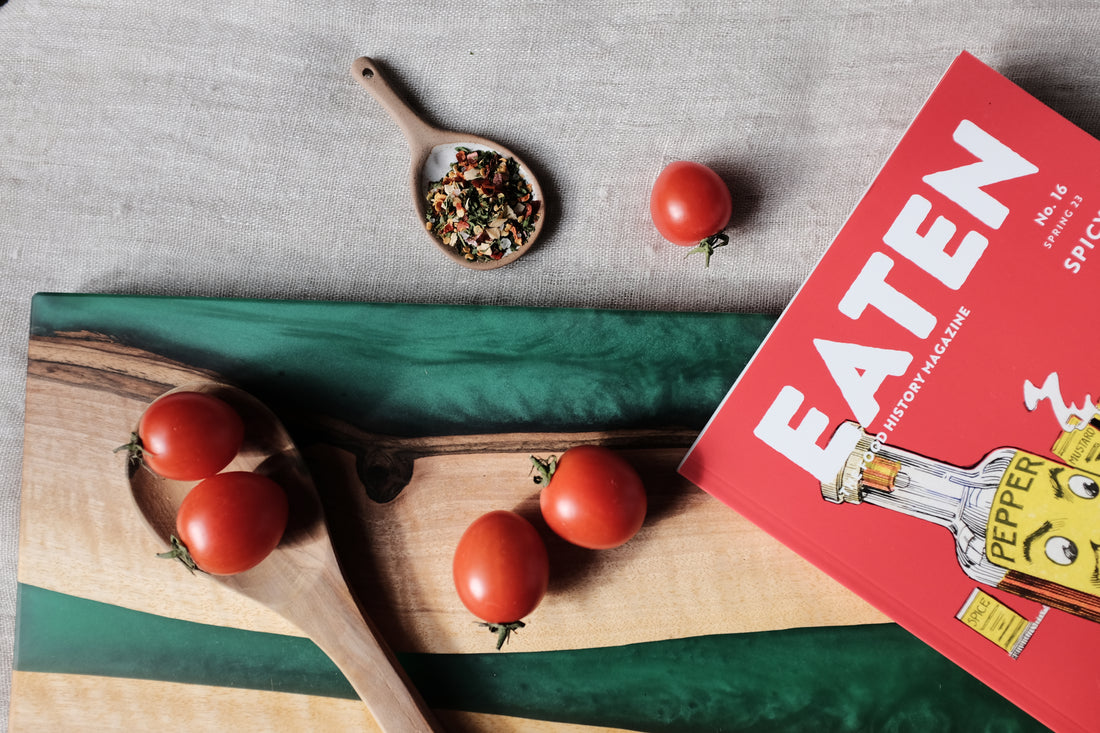By Luchia Karachorova
In the last few years, we see more and more handmade resin items. Whether it's jewelry or furniture with interesting shapes and colorful pigments, one thing is clear - resin is the new fashion in art and DIY. Due to the growing popularity of the topic, we decided to briefly answer the main questions we often come across related to this art, as well as to give you a closer look into the vast world of resin.

What is resin art?
The meaning of resin art is multifaceted and multilayered. Epoxy resin, for example, was first discovered in the 1930s. Once people realized that it could be used to glue objects together or to preserve them, it was patented as a product in its own right. Soon after, it entered the field of art, where it being increasingly used.
Nowadays, the possibilities for creative projects with resin are limitless. Whether you're an amateur, craftsman or artisan, you can create anything from small items like jewelry and decorative objects to large-scale projects like art paintings and furniture. But what is resin actually?
Resin is a high-gloss, high-viscosity substance derived from both organic and synthetic substances. However, its similar characteristic to plastic provokes different opinions about it. Most people consider it a type of plastic, while others view it the other way around, with plastic simply being the result of processed resin. However, the resin used in art is different from the traditional plastic used in plastic bags, toys or outdoor furniture. It's important to know that the different shapes that crafted items come in, require different types of resin. Here we will highlight some of the main and most used ones.
Types of resins used in art
There are several types of resins and plastics, but only three come up as the most commonly used in creative circles:
Acrylic
True to its name, this resin is the material used for clear acrylic products such as lenses, screens, and containers. It is produced by mixing powder, an acrylic polymer, and a liquid called methyl methacrylate monomer, which serves as a hardener. The result is a thermoplastic product that you can re-heat and modify even after it has hardened.
Note that the components of acrylic resin are highly toxic and flammable. There are powders in it that can cause blindness if they accidentally get in your eyes. Because of these characteristics, acrylic is most commonly used in industrial environments and much less commonly in the creative arts
Polymer
Polymer and epoxy resins are classified as thermosetting plastics, meaning that heat does not melt them the way it does thermoplastics. Rather, heat or another type of catalyst can harden them, resulting in a solid end product that cannot be remelted.
Polymer is a similar in type and more affordable alternative to epoxy resin, but of much lower quality than it. Therefore, it is often used only for mold casting and not for projects requiring more delicate processing.
Additionally, polymer resin also has harmful components. Specifically, you should not use it in confined spaces because of its fumes and strong odor.
Epoxy resin
Epoxy resin is our favorite material for creating art, as you can use it for all kinds of handmade items. Additionally, out of all three types of resin, epoxy is the safest material to work with, as evidenced by its lack of unpleasant odor and numerous health warning labels.
Epoxy resin is synthetically manufactured to mimic the desirable properties of natural resin and consists of a two-component system of synthetic polymer resin and hardener. Once these components are combined, they undergo a chemical reaction that cures the mixture to form a solid medium.
Moreover, due to the active use of resin in recent years, more environmentally friendly alternatives have emerged, such as EcoPoxy, a bio-based resin produced from renewable resources.
On our website, you can find different sizes of the resin as well as a variety of colors of EcoPoxy pigments. They can be put in good use for your own personal art projects. For inspiration we advise you to take a look at our collection of serving boards and furniture made in a combination of solid wood and epoxy resin.
